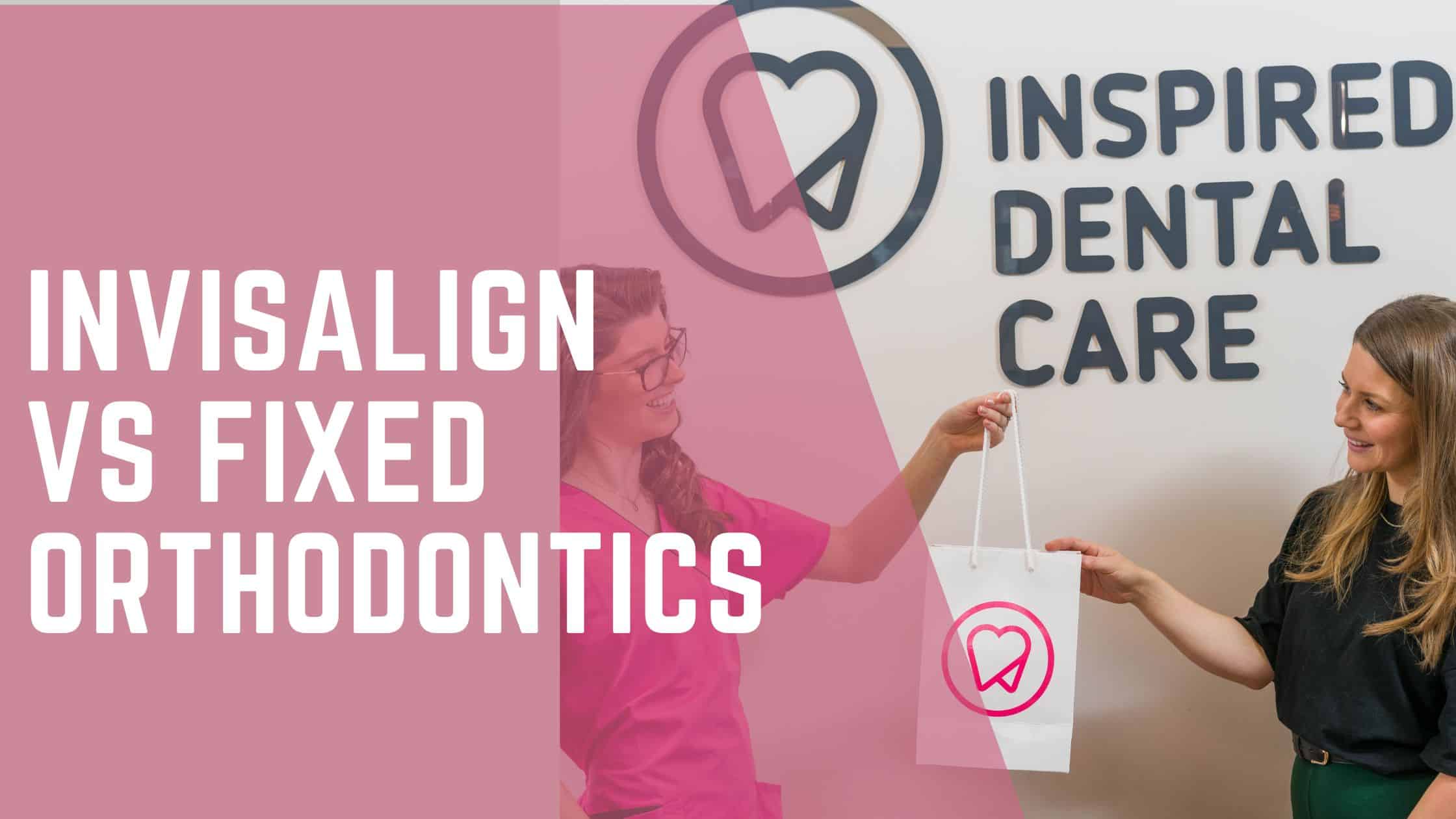Invisalign® vs Fixed Orthodontics
Many people ask, what the difference between Invisalign® and fixed braces is when it comes to tooth movement. Aren’t they both orthodontic appliances? Yes, they absolutely are and the final outcome of straighter teeth should be the same for both options (unless you have been told there is a preferred option from a clinical point of view by the orthodontic expert). Nevertheless, the route taken to get to that end point is what differentiates the two types of braces.
Invisalign® is a clear, removable aligner system you wear for 22 hours a day, meaning, you should only remove them to eat, drink (anything that is not still water) and brush your teeth. Fixed appliances (otherwise known as “traditional braces” or “train track” braces) are as the name suggests, fixed onto your teeth for 24 hours a day. You cannot obviously remove the braces when you are eating or drinking with a fixed brace, but you need to be more careful with hard, sticky and highly acidic and sugary foods which could pull off the brackets from your teeth or cause decay around them.
With Invisalign® treatment, you will be prescribed a series of aligners to gradually move your teeth into a more desirable position. Some argue that the levels of discomfort you may experience with Invisalign® during tooth movement is reduced but there is not yet evidence to support these claims. With Invisalign® you are required to change aligners every 8-15 days (depending on your clinical prescription) and visit us for reviews generally every 6-8 weeks to ensure that your teeth are tracking as they should.
With fixed appliances/fixed braces, you will have brackets bonded onto your teeth and wires attached to these and have these reviewed by us every 4-8 weeks. As is evident, the time between appointments does not differ significantly but in our experience we have found that the main difference is that patients experience less “orthodontic emergencies” and therefore are required to attended fewer unscheduled visits with Invisalign® in comparison to fixed appliances.
What should my cleaning routine be like?
With Invisalign®, you simply remove your aligners, brush and floss your teeth as normal and then brush your aligners using cold water. Then, you are ready to pop them back in and continue with your day! With a fixed brace you cannot remove the brackets and wires therefore you need to brush and floss over and around the braces, ensuring you are cleaning around the brackets and wires well so that there is no food debris stuck that could cause further issues. In our experience, we found that patients wearing Invisalign® may end up brushing their teeth more often per day but brushing usually takes less time as there are fewer features attached to your teeth.
So which system is better?
The answer to this is very much case specific. Depending on the complexity and severity of the movement needed, one system may be better suited to you than another. In theory, fixed braces will be considered the “gold standard” for the simple reason than they move your teeth 24 hours instead of 22 hours and the patient is not able to remove them, which gives more control to the orthodontic expert. In practice, with the latest developments in Invisalign® technology, approximately 95% of the cases can be treated with Invisalign® or fixed braces and similar results and timeframes can be expected. You would be able to find out at your consultation with our orthodontic expert which systems suits the needs of your teeth. There are numerous clinical factors to consider when determining which braces system might work for you such as the type of movement required, spacing, missing teeth, rotations, crowding, anatomy; as well as other factors such as diet, lifestyle, professional life and aesthetic expectations. All of these will be assessed and discussed with you in detail before any clinical decisions are proposed. Nevertheless, with either system, your oral health must be good, free from decay or active gum disease and you must be prepared to maintain an excellent cleaning regime. Orthodontics is usually an elective treatment, meaning you do not have to have it! Your mouth must be clinically stable and healthy to safely move your teeth through the bone and gums. Your overall oral health will be assessed regularly and if something require attention prior to the commencement of your orthodontic treatment or during it will be discussed with you.
How do I get started?
The first stages in your orthodontic journey would be scheduling an initial complimentary consultation with one of our treatment coordinators. This is a fantastic opportunity to ask any general questions you may have relating to the actual treatment, finance and payment options. We take the time to discuss the treatments potentially available for your and can look through before and after photos of other patients who have similar clinical presentations.
So, what are you waiting for? Contact us today to book your complimentary consultation and start your smile transformation now, worry free.



